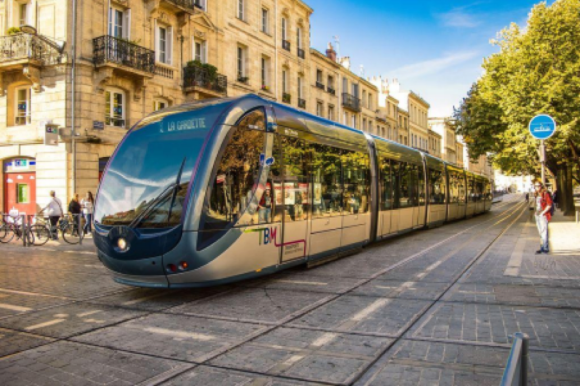
This year’s European Week of Regions and Cities is not short of initiatives that tackle the future of the union. Among them, four projects aiming to bring sustainability into public transport stand out.
By Carlos Caselles and Matilde Dias (Edited by Vilde Skorpen Wikan)
In a densely populated, highly urban continent like Europe, public transport is the backbone of many citizens’ everyday lives. In 2014, more than 57 billion journeys took place on our continent; either by bus, tram, metro or suburban rail. In recent years, public transport in Europe has become increasingly important and, as such, there are many initiatives that aim to improve the quality of this essential service.
Yet doing so in a sustainable and energy efficient way is a challenge. Among the many projects that are seeking to find solutions, four were the subject of Public Transport as a Driver of the Energy Transition in the Transport Sector, a conference held on October 12th in the framework of the European Week of Regions in Brussels, Belgium.
While Marta Woronowicz’ (Poland) and Lukas Kerschhaggl’s (Austria) aim is to expand the reach of photovoltaic energy in their home countries, Stefano Zenoni’s (Italy) goal is to capitalize on the ongoing green transition by switching Bergamo’s public transport network contaminating power source to a greener one. To close things off, Jascha Lackner’s (Germany) initiative provides answers about the green transition from several perspectives; legal and infrastructural, among them.
PV energy: the one to watch
Emphasizing the importance of photovoltaic (PV) systems, better known as solar panels, both Woronowicz and Kerschhaggl are on a mission to minimize pollution and maximize renewable energy usage in their communities. Woronowicz’ project, which mainly consists of the installation of PV panels on top of a trolley bus station in the Polish city Gdynia, hasn’t been fully implemented yet due to the lack of a national strategy by the Polish government. Despite this, the efforts towards sustainable powering of public transport and promotion of electromobility have raised awareness about the importance of renewable energy production, especially among the younger generations.
Kerschhaggl’s project, on the other hand, was met with support by the local authorities right from the start. The PV panels, installed on top of a metro station in Leipzig, Germany in early 2020, have already returned promising results. For instance, PV production yielded around 10 percent of the energy needed to run the metro station. In his presentation, Kerschhaggl assured that, “on a sunny summer day”, PV energy is more than enough to meet 50 percent of the station’s power demand.
Sustainability starts locally
To learn more about environmentally friendly modes of transport, Stefano Zenoni gave the example of Bergamo, the 4th largest city in the Lombardy region of Italy. According to the municipality councillor, gradual change can be seen daily. Only in the last few years, the share of mobility services with low environmental impact have risen to around 66 percent.
“Thanks to major investments, the ATP Group [industrial organization] has been focusing on green mobility to cover 36 percent of the journey by electric vehicles and 30 percent by natural gas vehicles”, Zenoni said.
Still, the future looks even more ambitious, thanks to the Sustainable Urban Mobility Plans (SUPM’s), promoted by the European Union. Initiatives to regenerate the railway yard in the Italian region of Bergamo, such as Porta Sud or the implementation of an electric bus line like E-BRT, are some of the mobility actions that will make a difference in the lives of the locals.
Dreaming of a greener Europe
Jascha Lackner also shared similar aims, bringing focus to alternative powertrains and sustainable mobility in Germany. Lackner pointed out that electric cars have rapidly become widespread in Germany, and may reach ten million by 2030. However, electric mobility can be more than just cars.
“It is about infrastructure, energy solutions, cross border accounting systems, property rights of houses, incentive, taxes and even traffic lights”, Lackner said.
Accordingly, the German energy agency Dena developed a guide to show municipalities options for the use of alternative means of transportation and fuels. Taking into account the disparities between regions, the guidelines will provide a common framework to find the best mobility solutions for each county.
And we are already seeing examples of what the future of public transport in Europe may look like. It’s in the little sticker that says “100% renewable energy” on your local bus. It’s in the electric charging spots for your car that are proliferating more and more every day. Above all, it’s in the hearts of the people that strive daily to make public mobility accessible and sustainable.
There are still plenty of challenges along the way. But, little by little, we can dream of a greener Europe, where traveling easily is not synonymous with damaging the environment.



